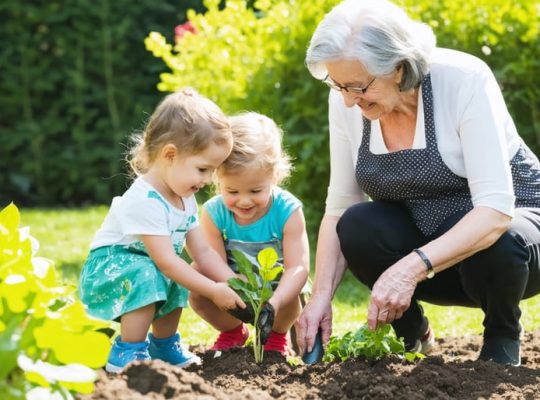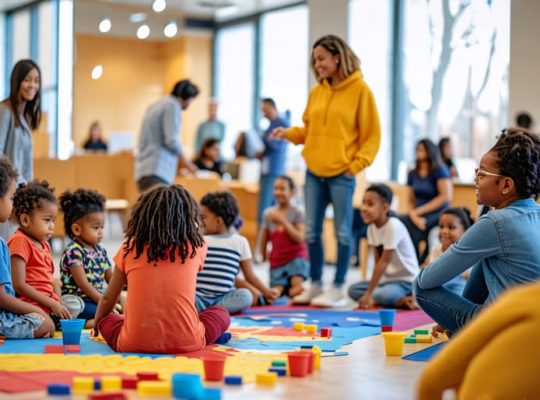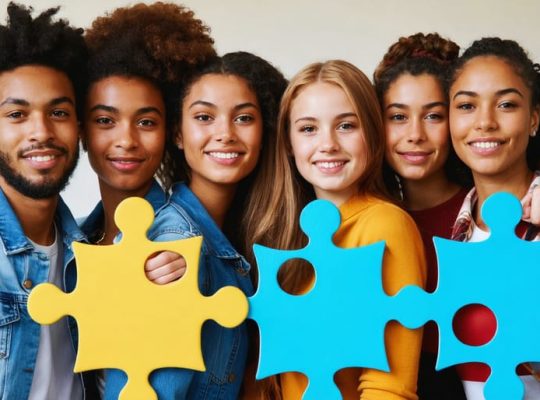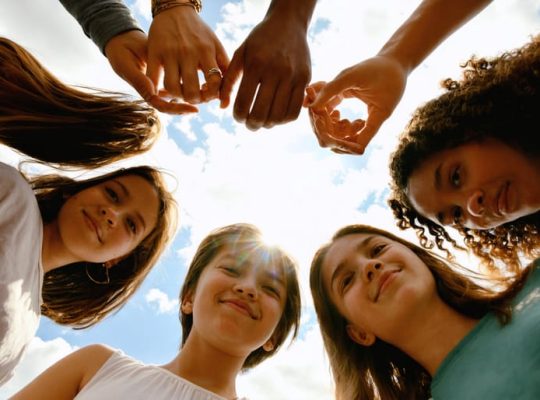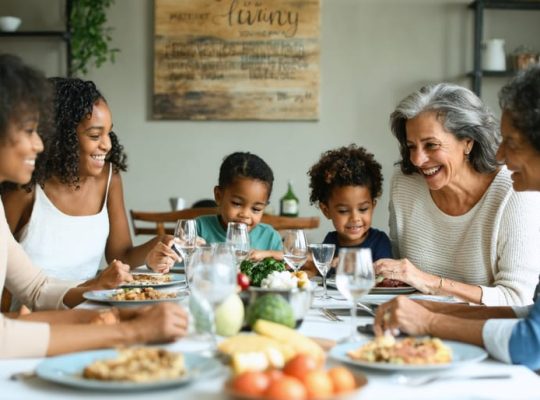In the wake of natural disasters and community crises, rebuilding social connections proves just as vital as physical reconstruction. When Hurricane Sandy devastated coastal communities in 2012, neighborhoods with strong social networks recovered significantly faster than isolated areas. This pattern repeats across disasters worldwide, highlighting how social capital – the invisible threads of trust, reciprocity, and mutual support binding communities together – serves as a critical foundation for resilience.
Studies consistently show that communities with robust social connections experience up to 60% faster recovery rates following disasters. These networks facilitate everything from immediate emergency response to long-term emotional healing and economic rebuilding. Yet many disaster recovery programs still focus primarily on physical infrastructure, overlooking the crucial role of social relationships in sustainable recovery.
Building resilient social capital requires intentional effort at both individual and institutional levels. Local organizations, faith communities, and neighborhood associations play essential roles in fostering these connections before disasters strike. When combined with targeted post-disaster support programs, these social bonds create a powerful safety net that helps communities not just survive, but emerge stronger from crisis. Understanding and investing in social capital isn’t just about recovery – it’s about building communities that can withstand whatever challenges the future may bring.
Understanding Social Capital in Youth Recovery
What is Social Capital?
Social capital is like a special kind of community treasure chest that we build through our relationships and connections with others. Think of it as an invisible support network made up of trusted friends, family members, teachers, neighbors, and community groups who are there for each other during both good times and challenging moments.
Just as financial capital refers to money in the bank, social capital represents the resources we can access through our social connections. These resources might include emotional support, practical help, valuable information, or even opportunities for growth and development. For young people recovering from disasters, social capital becomes particularly important as it provides a safety net of caring individuals who can help them bounce back and heal.
Dr. Sarah Martinez, a child psychologist, explains it this way: “When children have strong social capital, they know there are people they can turn to when they’re scared or confused. It’s like having multiple helping hands ready to lift them up when they stumble.”
This network of support can take many forms, from formal organizations like schools and community centers to informal groups like sports teams or neighborhood friends. The stronger these connections are, the more resilient young people become in facing and overcoming challenges.
Why Social Networks Matter for Recovery
Research consistently shows that strong social networks play a vital role in helping communities bounce back after disasters and traumatic events. When people maintain meaningful connections with family, friends, and neighbors, they’re better equipped to handle stress and find practical solutions to challenges. These relationships provide emotional support, share resources, and help create a sense of stability during uncertain times.
Studies from the National Child Traumatic Stress Network demonstrate that children and teens who have robust social connections show greater resilience and faster recovery after challenging events. Understanding the fundamental principles of peer support helps communities create stronger support systems that benefit everyone involved.
Dr. Sarah Martinez, a child psychologist specializing in trauma recovery, explains: “When young people feel connected to others who understand their experiences, they’re more likely to seek help when needed and develop healthy coping strategies. These social bonds act as a protective shield, helping them navigate difficult emotions and experiences with greater confidence.”


Building Resilient Youth Support Systems
Family Connections
In times of disaster recovery, family support and mental well-being become crucial anchors for children navigating trauma. Strong family connections serve as a protective buffer, helping young people process difficult experiences and build resilience. Parents can create safe spaces for open dialogue by setting aside dedicated family time each day, even if just for 15 minutes of undivided attention.
Dr. Sarah Chen, a family therapist specializing in trauma recovery, shares: “When families maintain regular routines and open communication channels, children feel more secure and better equipped to handle stress. Simple activities like sharing meals or taking evening walks together can make a significant difference.”
Creating family rituals specific to the recovery period can be particularly healing. For example, the Martinez family established a weekly “feelings circle” where each member shares their hopes and concerns without judgment. These structured opportunities for connection help children feel heard and supported while strengthening family bonds.
Remember that recovery isn’t linear, and each family member may process trauma differently. Practice patience, validate emotions, and celebrate small victories together. When families face challenges as a united front, they build collective resilience that serves as a foundation for long-term healing and growth.
Peer Support Networks
In the aftermath of a disaster, peer support networks play a vital role in helping communities heal and rebuild. These networks create safe spaces where individuals can share experiences, emotions, and coping strategies with others who truly understand their situation. Research shows that people who participate in peer support groups demonstrate better emotional resilience and faster recovery rates compared to those who face challenges alone.
Community organizations can facilitate peer connections through structured group activities, regular meetups, and shared projects focused on rebuilding efforts. For example, the Smith Community Center in New Orleans organized weekly support circles after Hurricane Katrina, where residents could connect, share resources, and plan neighborhood restoration projects together.
Mental health professional Dr. Sarah Chen emphasizes, “When people work together toward common goals, they not only rebuild physical structures but also strengthen emotional bonds that serve as a foundation for long-term recovery.”
Effective peer support networks often include:
– Regular check-ins among neighbors
– Shared meal programs
– Community gardening projects
– Skills-sharing workshops
– Youth mentoring programs
– Parent support groups
These initiatives help create multiple touchpoints for connection while serving practical needs. The key is maintaining consistency and accessibility, ensuring that support remains available long after immediate disaster response efforts conclude. When communities invest in nurturing these relationships, they build stronger, more resilient social networks that can weather future challenges together.
Community Integration
Connecting young people with community support services and caring mentors plays a vital role in rebuilding resilience after disaster events. When youth feel connected to their community, they develop stronger coping skills and a more robust support network to help them navigate challenges.
Local organizations like youth centers, sports clubs, and faith-based groups can provide safe spaces where young people connect with positive adult role models. These relationships often become anchors of stability during uncertain times. As Sarah Martinez, a youth counselor in New Orleans, shares, “After Hurricane Katrina, we saw how kids who maintained connections with community mentors showed remarkable emotional recovery compared to those who remained isolated.”
Creating opportunities for youth to participate in community service projects can be especially healing. When young people contribute to their community’s recovery, they gain a sense of purpose and agency. Whether it’s helping at a food bank, participating in neighborhood clean-up efforts, or tutoring younger children, these activities strengthen social bonds and build confidence.
Parents and caregivers can support this process by:
– Identifying local mentorship programs
– Encouraging participation in community activities
– Facilitating connections with trusted adults
– Supporting involvement in youth-led initiatives
– Maintaining regular communication with community leaders
Remember that building these connections takes time and patience, but the long-term benefits for youth resilience are invaluable.
Maintaining Long-Term Social Connections
Regular Check-ins and Communication
Regular communication plays a vital role in maintaining strong social connections during post-disaster recovery. Dr. Sarah Chen, a child psychologist, emphasizes that “consistent check-ins create a safety net that helps children feel secure and supported during challenging times.”
Establishing routine contact can take many forms. Daily virtual calls with family members, weekly meetups with peer support networks, or scheduled group activities can provide the stability children need. Emma, a middle school counselor, shares how her students benefited from daily morning check-ins: “Just five minutes of sharing helped them feel connected and less alone in their experiences.”
Consider implementing these practical communication strategies:
– Set up regular video calls with extended family members
– Create buddy systems where children check on each other
– Schedule weekly community gatherings
– Use digital platforms to maintain contact when in-person meetings aren’t possible
– Establish consistent meeting times for support groups
Remember to make these check-ins meaningful rather than just routine. Ask specific questions about feelings, challenges, and victories, no matter how small. Be present and actively listen during these interactions. If a child seems reluctant to participate, offer alternative ways to communicate, such as writing, drawing, or other creative expressions.
When organizing regular check-ins, be mindful of potential barriers like time zones, technology access, or language differences. Work with families and community members to find solutions that ensure everyone stays connected and supported throughout the recovery process.
Addressing Barriers to Connection
After a disaster, communities often face several challenges that can make it difficult to maintain and strengthen social connections. Understanding and actively addressing these barriers is crucial for successful recovery and rebuilding of social capital.
Physical displacement is often the first major obstacle, as families may be separated or relocated to different areas. To overcome this, communities can establish regular virtual meetups, create phone trees, or organize transportation assistance to help people stay connected despite geographical distances.
Time constraints and competing priorities can also strain social relationships during recovery. Many individuals struggle to balance immediate recovery needs with maintaining social connections. Creating structured opportunities for connection that align with daily routines, such as community meals during lunch breaks or child playgroups during school pickup times, can help address this challenge.
Emotional barriers, including trauma and anxiety, may cause some people to withdraw from social interactions. Mental health support groups and trauma-informed community activities can help individuals feel safe and supported while rebuilding connections. As Sarah Martinez, a trauma counselor, notes, “Creating safe spaces where people can share their experiences without judgment is essential for healing and reconnection.”
Resource limitations can restrict social gathering opportunities. Communities can address this by pooling resources, sharing spaces, and organizing low-cost or free social activities. Local organizations and faith-based groups often play vital roles in providing venues and support for these initiatives.
Cultural and language differences may create additional challenges in diverse communities. Developing multilingual communication channels and culturally sensitive gathering spaces helps ensure everyone feels welcome and included in community recovery efforts.
Role of Mental Health Professionals
Mental health professionals play a crucial role in fostering social capital during post-disaster recovery. These dedicated practitioners serve as bridge-builders, helping individuals and communities reconnect and strengthen their social bonds when they’re most vulnerable.
Licensed therapists, counselors, and social workers often begin by creating safe spaces where survivors can share their experiences and emotions. Through group therapy sessions and community workshops, they facilitate meaningful connections between individuals who have experienced similar trauma, laying the groundwork for mutual support networks that extend beyond professional care.
Dr. Sarah Chen, a disaster recovery specialist, explains: “We’re not just treating individual trauma; we’re helping rebuild the social fabric that disasters can tear apart. When people connect through shared experiences, they develop stronger coping mechanisms and more sustainable support systems.”
These professionals also work closely with community leaders and organizations to develop programs that enhance social connectivity. They might organize support groups for parents, coordinate activities for children, or facilitate community meetings where residents can collectively plan recovery efforts. This structured approach helps create multiple touchpoints for social interaction and mutual aid.
Additionally, mental health professionals train community members in basic emotional support skills, creating a ripple effect of care throughout the affected area. This empowerment approach helps communities develop their own capacity for healing and support.
A vital aspect of their work involves identifying isolated individuals and helping them reconnect with their community. They pay special attention to vulnerable populations, such as elderly residents or newcomers to the area, ensuring no one falls through the cracks of the social support system.
Through careful documentation and assessment, these professionals also help measure the impact of social capital initiatives, enabling communities to refine and improve their approach to recovery. Their expertise in trauma-informed care ensures that all social connection efforts remain sensitive to the unique challenges of post-disaster healing.
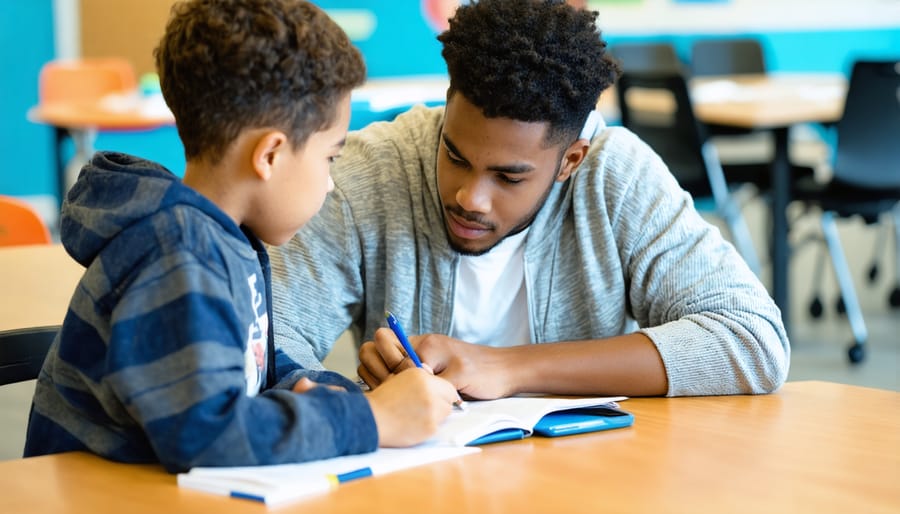
Building resilience and social capital after disasters requires dedication, collaboration, and sustained community effort. By focusing on strengthening relationships, fostering supportive networks, and implementing evidence-based recovery programs, we can help communities bounce back stronger than before. Remember that every small action counts – whether it’s organizing neighborhood support groups, volunteering at local recovery initiatives, or simply reaching out to those in need. The path to recovery may be challenging, but by working together and maintaining hope, we can create more resilient communities that are better prepared for future challenges. Let’s take action today to build the connections and support systems that will help our children and families thrive in the face of adversity.


